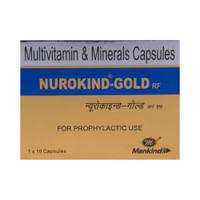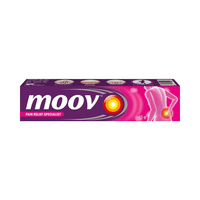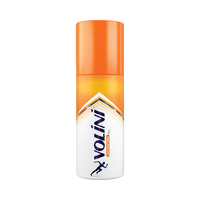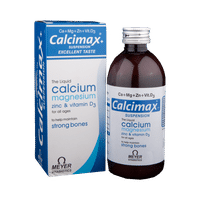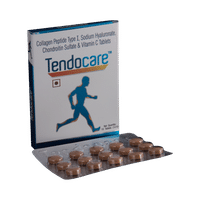Rs.50.40for 1 strip(s) (10 tablets each)
food interaction for Dicpin-MR
alcohol interaction for Dicpin-MR
pregnancy interaction for Dicpin-MR
lactation interaction for Dicpin-MR
food
alcohol
pregnancy
lactation
Dicpin-MR Tablet is to be taken with food.
This will help to avoid acidity and heartburn.
None
This will help to avoid acidity and heartburn.
None
CAUTION
It is not known whether it is safe to consume alcohol with Dicpin-MR Tablet. Please consult your doctor.
CONSULT YOUR DOCTOR
Dicpin-MR Tablet may be unsafe to use during pregnancy. Although there are limited studies in humans, animal studies have shown harmful effects on the developing baby. Your doctor will weigh the benefits and any potential risks before prescribing it to you. Please consult your doctor.
CONSULT YOUR DOCTOR
Information regarding the use of Dicpin-MR Tablet during breastfeeding is not available. Please consult your doctor.
CONSULT YOUR DOCTOR
SALT INFORMATION FOR Dicpin-MR
Chlorzoxazone(250mg)
Uses
Chlorzoxazone is used for muscle relaxation. It relieves painful spasms of the skeletal muscles.
How it works
Chlorzoxazone is a muscle relaxant. It works on the centres in the brain and spinal cord to relieve muscle stiffness or spasm without reduction in strength. This improves pain and movement of muscles.
Common side effects
Dizziness, Drowsiness, Lightheadedness, Rash, Petechiae (red or purple spot caused by bleeding into the skin), Ecchymosis (discoloration of the skin resulting from bleeding underneath), Angioneurotic edema, Anaphylactic reaction, Urine discoloration, General discomfort, Overstimulation
Diclofenac(50mg)
Uses
Diclofenac is used for pain relief. It relieves pain in conditions like headache, mild migraine, muscle pain, dental pain, rheumatoid arthritis, ankylosing spondylitis, osteoarthritis, or painful menses.
How it works
Diclofenac is a non-steroidal anti-inflammatory drugs (NSAID). It works by blocking the release of certain chemical messengers that cause pain and inflammation (redness and swelling).
Common side effects
Nausea, Headache, Dizziness, Vomiting, Flatulence, Constipation, Diarrhea, Abdominal pain, Dyspepsia, Gastrointestinal bleeding, Gastrointestinal ulcer, Rash, Application site irritation, Injection site pain, Chest pain, Hypersensitivity, Angioneurotic edema, Platelet disorders, Convulsion, Visual disturbance, Ringing in ear, Colitis, Stevens-Johnson syndrome, Myocardial infarction
Paracetamol(325mg)
Uses
Paracetamol is used for pain relief and fever. It is used to relieve pain in conditions like headache, muscle pain, or dental pain.
How it works
Paracetamol is an analgesic (pain reliever) and anti-pyretic (fever reducer). It works by blocking the release of certain chemical messengers that cause pain and fever.
Common side effects
Nausea, Vomiting, Insomnia (difficulty in sleeping), Headache, Constipation, Itching, Nephropathy, Hypersensitivity, Platelet disorders, Depression, Confusion, Hallucination, Abnormal vision, Hypoglycemia (low blood glucose level), Sterile pyuria, Liver toxicity, Hemorrhage
SUBSTITUTES FOR Dicpin-MR
1041 Substitutes
1041 Substitutes
Sorted By
 Rs. 48.20save 7% more per Tablet
Rs. 48.20save 7% more per Tablet Rs. 113pay 65% more per Tablet
Rs. 113pay 65% more per Tablet Rs. 149.25pay 174% more per Tablet
Rs. 149.25pay 174% more per Tablet Rs. 87.50pay 73% more per Tablet
Rs. 87.50pay 73% more per Tablet Rs. 76.50pay 52% more per Tablet
Rs. 76.50pay 52% more per Tablet
Expert advice FOR Dicpin-MR
- Chlorzoxazone provides relief from rigidity, tension and stiffness in muscles (spasticity) that may occur due to various conditions affecting the nervous system.
- Take it with or after food or a glass of milk.
- Chlorzoxazone may cause dizziness or sleepiness. Do not drive or do anything requiring concentration until you know how it affects you.
- Avoid consuming alcohol when taking Chlorzoxazone as it may cause excessive drowsiness.
- Inform your doctor if you are pregnant, planning to conceive or breastfeeding.
- Do not stop taking it suddenly without talking to your doctor if you've been on it for a long time.
Frequently asked questions FOR Dicpin-MR
Chlorzoxazone
Q. Is chlorzoxazone an opiate/ narcotic/ steroid/ controlled substance/ addictive?
No. Chlorzoxazone is mephenesin like centrally acting muscle relaxant that is used to relieve muscle stiffness and pain. It is not a steroid, narcotic, addictive or controlled substance
Q. Does chlorzoxazone be used for recreational purposes?
No, chlorzoxazone or any other drug should not be used for recreational purpose. Use only when prescribed by the doctor
Q. Does chlorzoxazone have aspirin or codeine in it?
No. It does not contain aspirin or codeine
Diclofenac
Q. Is Diclofenac a good painkiller?
Diclofenac is effective in relieving pain and inflammation. It is used for various sorts of pain such as sprains, strains and other injuries. It is also helpful in various types of arthritis, gout, pain and inflammation following surgery.
Q. Is Diclofenac a narcotic?
No, Diclofenac is not a narcotic. It belongs to non-steroidal anti-inflammatory drugs (NSAIDs) group of medicines.
Q. Does Diclofenac get you high?
No, Diclofenac does not get you high. It does not have an abuse potential (drug-seeking behavior) and does not cause physical or psychological dependence. However, if you do not feel well, consult your doctor.
Paracetamol
Q. What if I vomit after taking Paracetamol?
If you vomit in less than 30 minutes after having a dose of Paracetamol tablets or syrup, retake the same dose again. If you vomit after 30 minutes of a dose, you do not need to take another one until the next standard dose.
Q. When will I feel better after taking the Paracetamol?
Usually, you will start feeling better after about half an hour of taking a Paracetamol.
Q. How often can I take the Paracetamol?
You should only take four doses of Paracetamol in 24 hours. There should be a gap of at least 4 hours between two doses. Do not take Paracetamol for more than 3 days without consulting a doctor first.















